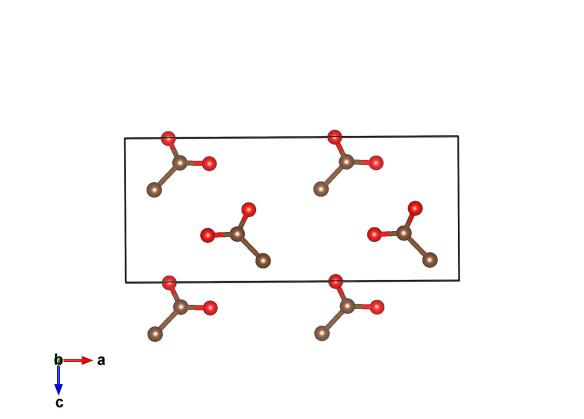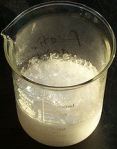Vinegar – acetic acid
What does it look like?

Image generated by the VESTA (Visualisation for Electronic and STructural analysis) software http://jp-minerals.org/vesta/en/
What is it?
 This is the molecule that gives the tang on your tongue when you add vinegar to your chips. Most vinegars have about 4-5 % acetic acid molecules in the mix. In pure form, acetic acid is known as 'glacial' acetic acid because of the snow-like white crystals it grows.
This is the molecule that gives the tang on your tongue when you add vinegar to your chips. Most vinegars have about 4-5 % acetic acid molecules in the mix. In pure form, acetic acid is known as 'glacial' acetic acid because of the snow-like white crystals it grows.
The image we've shown would seem a very over-simplified image of the crystal structure as it is missing the all-important four hydrogen atoms. However, as we've mentioned on the blog a few times before, finding hydrogen positions from X-ray diffraction is extremely challenging as they don't scatter very well. It would take a later neutron diffraction study to place where the hydrogen positions are in this material.
Where did the structure come from?
This arrangement of molecules came from a paper by Jones and Templeton, published in 1958. This is a very early determination of a molecular crystal structure, and the work built on information from other experimental methods, including spectroscopy.






